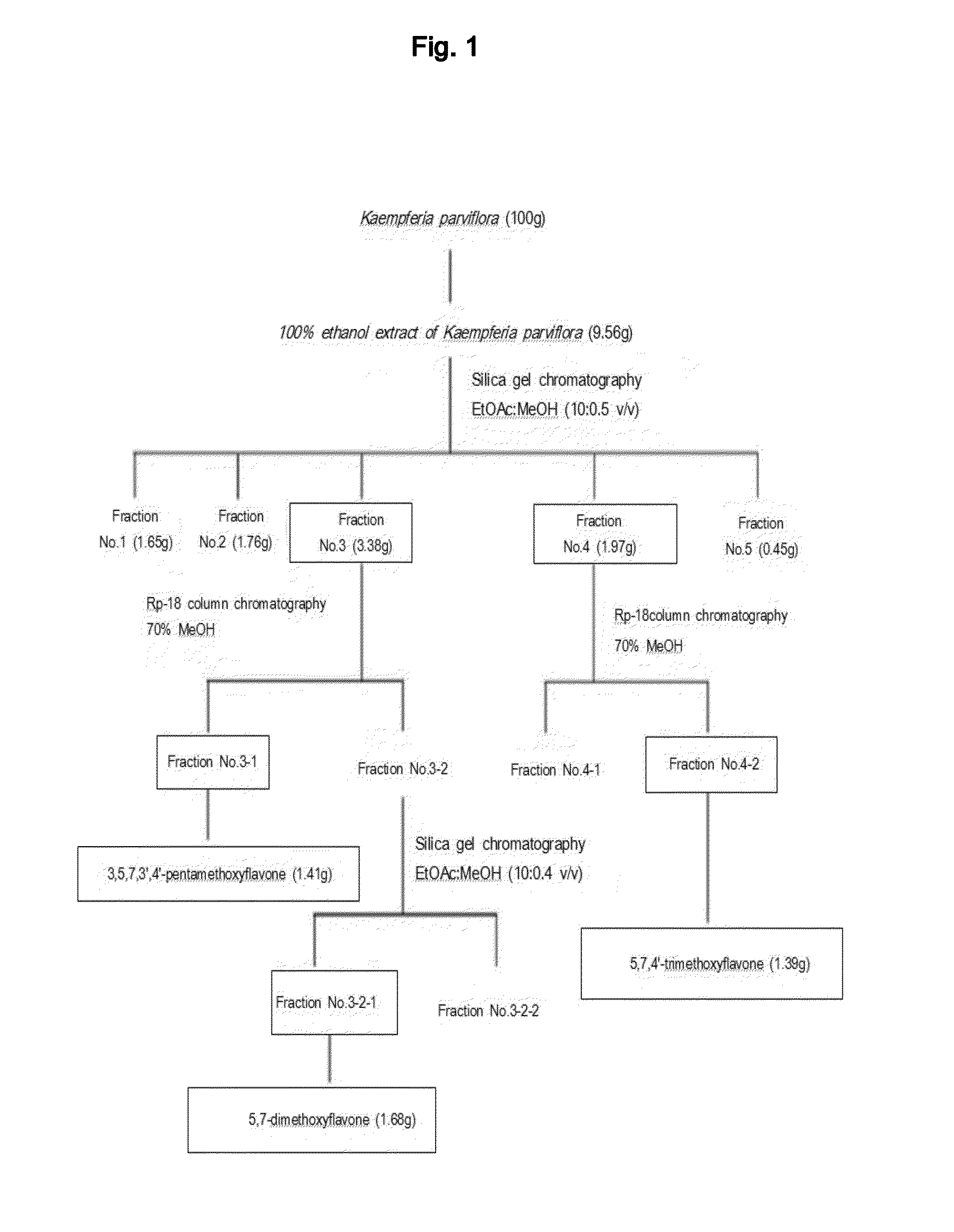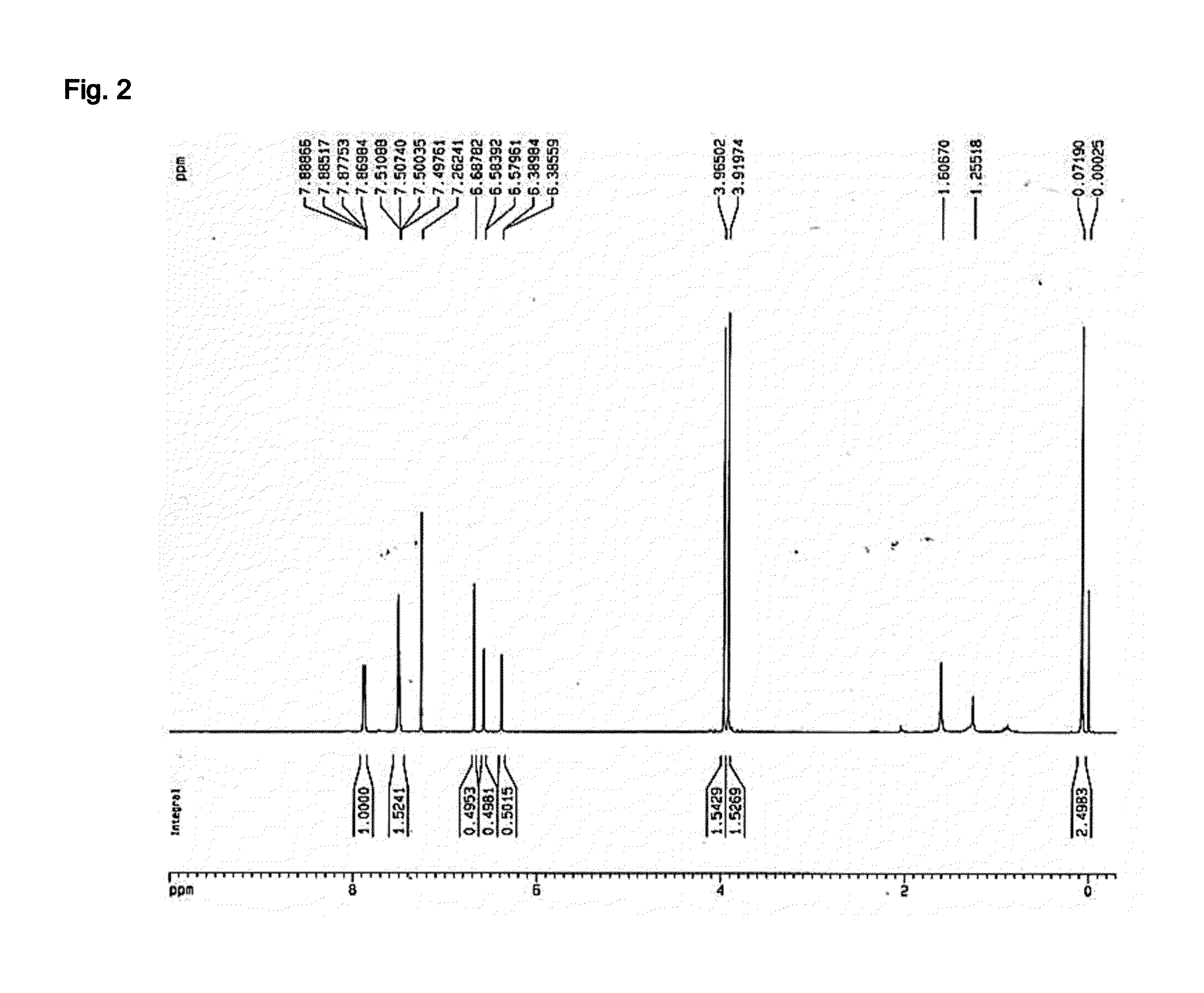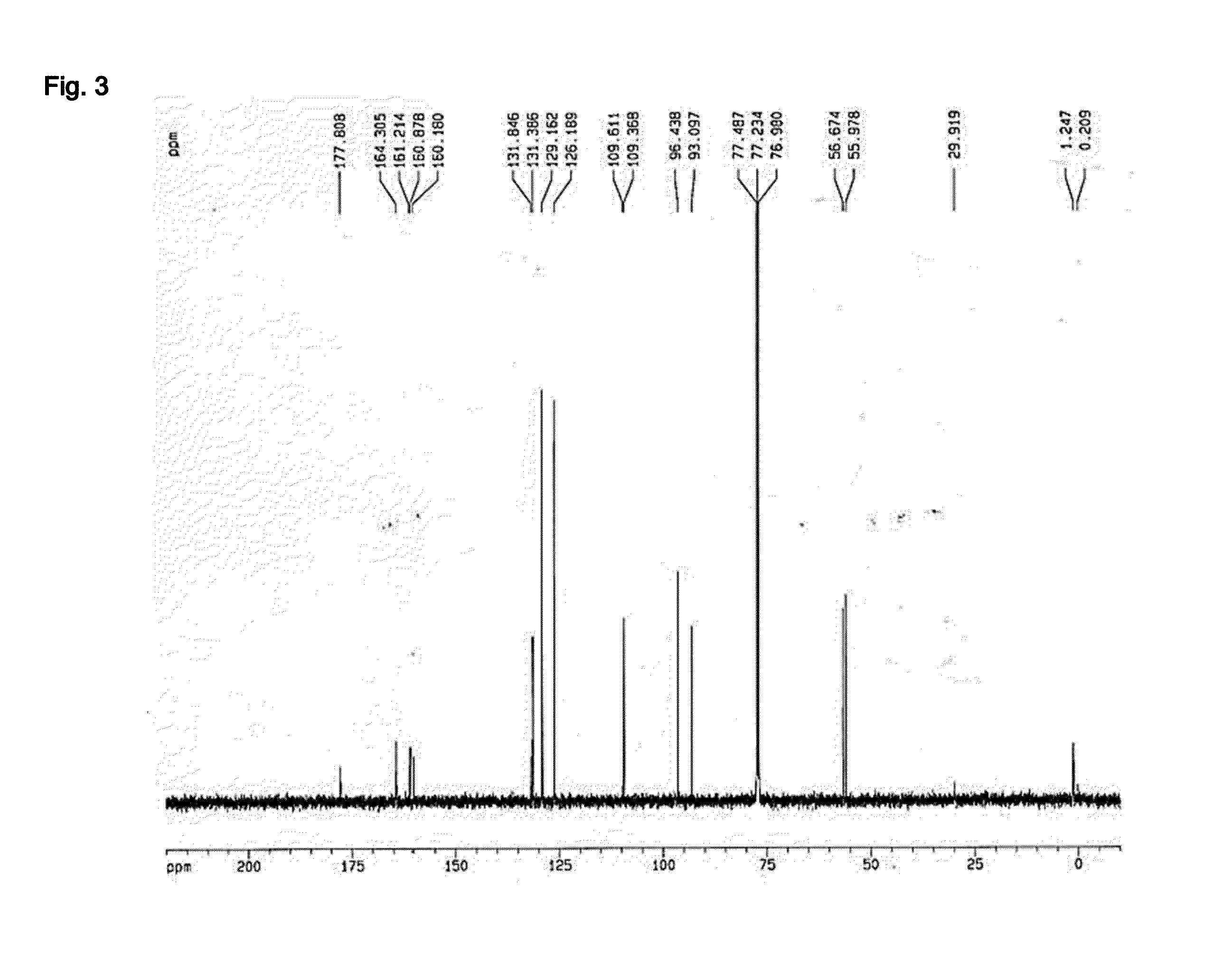Novel use of flavone-based compound
a technology of kaempferia parviflora and flavone, which is applied in the field of new use of flavone-based compounds or kaempferia parviflora extracts, can solve the problems of inability to use as cosmetic materials, unstable or difficult to reach the skin, and disrupt the enzymatic and non-enzymatic anti-oxidative defense systems, so as to prevent the formation of wrinkles, enhance the activity of collagen production, and enhance the effect of collagen
- Summary
- Abstract
- Description
- Claims
- Application Information
AI Technical Summary
Benefits of technology
Problems solved by technology
Method used
Image
Examples
example 1
Preparation of the Ethanol Extract of Kaempferia parviflora
[0101]Kaempferia parviflora rhizome was ground using a mixer. 100 g of the ground Kaempferia parviflora sample was then added to 1 L of ethanol and extracted after macerating at room temperature for 48 hours. The extracted sample was filtered through Whatman No. 2 filter paper. The solvent component was then removed from the filtered extract solution by concentrating using a rotary vacuum evaporator, resulting in obtaining the ethanol extract of Kaempferia parviflora.
example 2
Isolation and Identification of 5,7-dimethoxyflavone
[0102] Isolation of 5,7-Dimethoxyflavone
[0103]The concentrated ethanol extract of Kaempferia parviflora obtained in Example 1 was placed in a column (6×15 cm) packed with silica gel, and subsequently separated by using a solvent system containing a mixture of ethyl acetate and methanol (10:0.5, v / v). A total of five (5) fractions were obtained in the order of separation, followed by concentration drying. Out of the five fractions, the 3rd fraction (Fraction No. 3) was subjected to further separation through Rp-18 Column Chromatography (Lichroprep® RP-18 25˜40 μm, Merck & Co., USA) using 70% methanol as a developing solvent. A total of two (2) fractions were obtained in the order of separation, followed by concentration drying. Out of the two fractions, the 2nd fraction (Fraction No. 3-2) was placed in a column (6×15 cm) packed with silica gel, and subsequently separated by using a solvent system containing a mixture of ethyl acetat...
example 3
Isolation and Identification of 5,7,4′-trimethoxyflavone
[0106] Isolation of 5,7,4′-Trimethoxyflavone
[0107]The concentrated ethanol extract of Kaempferia parviflora obtained in Example 1 was placed in a column (6×15 cm) packed with silica gel, and subsequently separated by using a solvent system containing a mixture of ethyl acetate and methanol (10:0.5, v / v). A total of five (5) fractions were obtained in the order of separation, followed by concentration drying. Out of the five fractions, the 4th fraction (Fraction No. 4) was subjected to further separation through Rp-18 Column Chromatography (Lichroprep® RP-18 25˜40 μm, Merck & Co., USA) using 70% methanol as a developing solvent. A total of two (2) fractions were obtained in the order of separation, followed by concentration drying. Out of the two fractions, the 2nd fraction (Fraction No. 4-2) was concentrated and dried to isolate a pure active substance effective for wrinkle improvement. Procedures of the above described isolati...
PUM
| Property | Measurement | Unit |
|---|---|---|
| volume | aaaaa | aaaaa |
| elasticity | aaaaa | aaaaa |
| skin elasticity | aaaaa | aaaaa |
Abstract
Description
Claims
Application Information
 Login to View More
Login to View More - R&D
- Intellectual Property
- Life Sciences
- Materials
- Tech Scout
- Unparalleled Data Quality
- Higher Quality Content
- 60% Fewer Hallucinations
Browse by: Latest US Patents, China's latest patents, Technical Efficacy Thesaurus, Application Domain, Technology Topic, Popular Technical Reports.
© 2025 PatSnap. All rights reserved.Legal|Privacy policy|Modern Slavery Act Transparency Statement|Sitemap|About US| Contact US: help@patsnap.com



